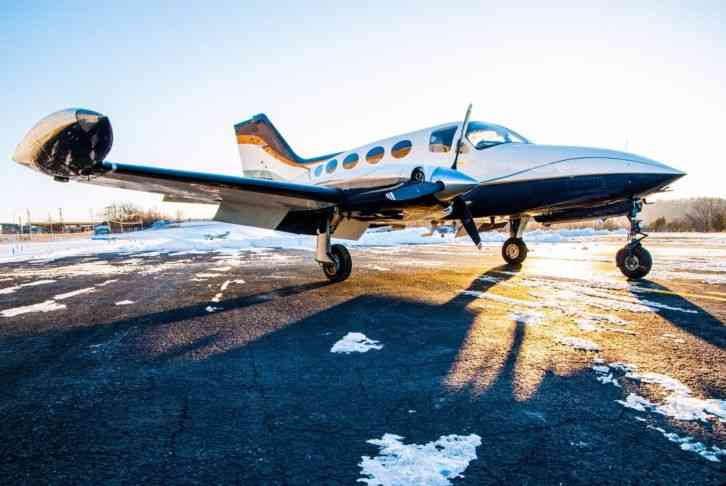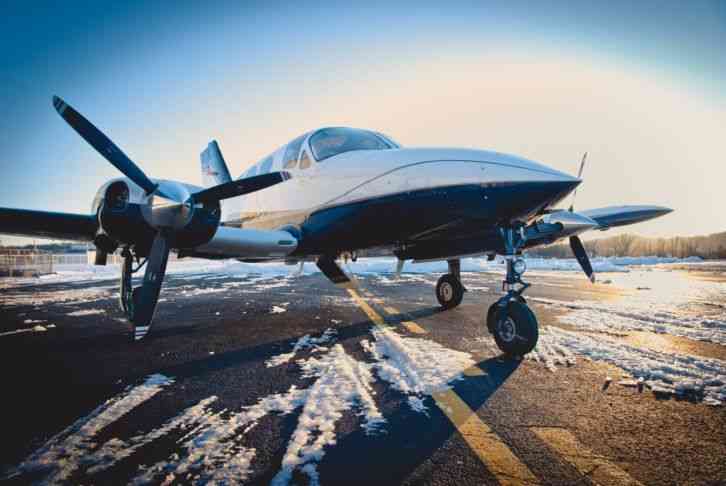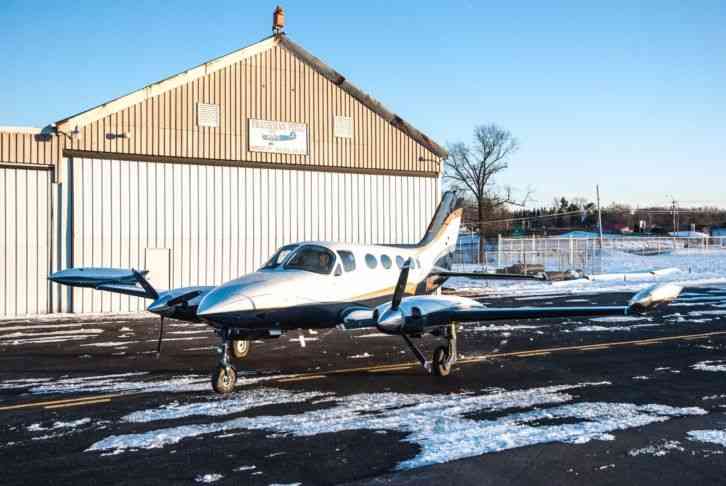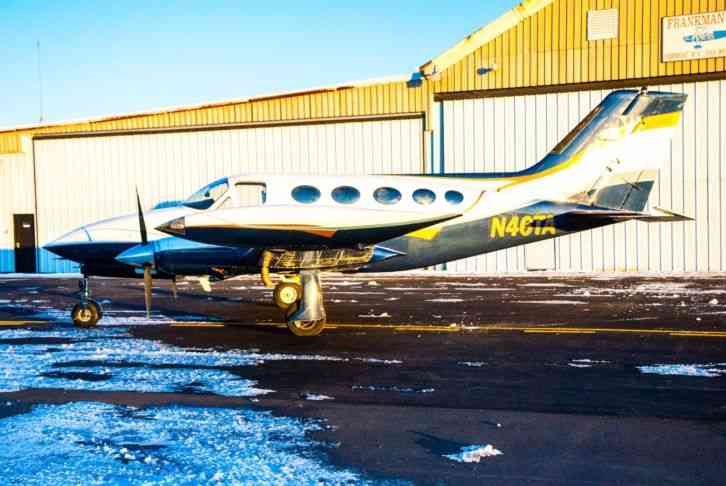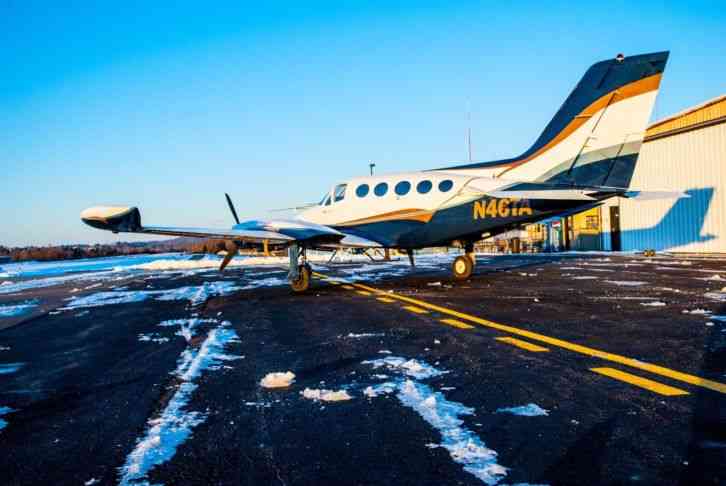Cessna 1972 Cessna 414 RAM Series IV Engine specs: 752 hours since RAM overhaul on left engine 92.
Item specifics
| Condition: | Used | Make: | Cessna |
| Model Year: | 1972 |
Engine specs:
752 hours since RAM overhaul on left engine 92 hours since RAM overhaul on right engine.
Props: Both Left and Right props 752 hours since overhaul
Total Time: 6075 hours
Avionics: GNS 530 GPS 2 King KT76 Transponder F-Tec Fifty Five autopilot King Audio Panel
Extended fuel capacity Factory air conditioning Full De-ice package, including newly installed heated windshield with boots in good condition Beautiful 4 tone paint, newly finished in 2014. Has to be seen in person to believe! Spacious and comfortable cabin. New Carpet and Upgraded Leather Interior. Comes complete with cupboard and bar.
Currently operating on a 135 Certificate. Would be willing to discuss options regarding new operations. Comes with a fresh annual.
The Cessna 414 is an American light, pressurized, twin-engine transport aircraft built by Cessna. It first flew in 1968 and an improved variant was introduced from 1978 as the 414A Chancellor .Contents [hide] 1Design and development1.1Modifications2Variants3Operators3.1Military operators4Accidents and incidents5Specifications (414A Chancellor)6See also7References8External linksDesign and development[edit]The pressurized 414 was developed to appeal to owners of un-pressurised twin-engined aircraft and was based on the fuselage of the Cessna 421 and used the wing design of the Cessna 401. The 414 is a low-wing cantilever monoplane with a conventional tail unit and a retractable tricycle landing gear. It is powered by two wing-mounted 310 hp (231 kW) Continental TSIO-520-J horizontally opposed-six piston engines. The prototype, registered N7170C, first flew on 1 November 1968 and production aircraft were available in a number of optional seating arrangements and avionic packages. The name Chancellor was used for models marketed from 1976. An improved variant the Cessna 414A Chancellor was introduced in 1978 with the major change being a re-designed and increased-span wing with integral fuel tanks and an extended nose to give more baggage space.Modifications[edit]Many supplemental type certificates exist for the aircraft that allow upgrades to improve performance. Common are engine and aerodynamic modifications, including winglets.[1]In 1974, American Jet Industries built a turboprop-powered conversion of the Cessna 414, named the Turbo Star Pressurized 414 , using Allison 250-B17B engines.[2] Scenic Airlines of Las Vegas purchased the rights to the design in 1977.[3]Thielert has offered engine conversions using their Centurion Engine.[4] This involves the installation of FADEC-controlled aviation diesel piston engines that run on commonly available jet fuel. Thielert claims increased power and improved fuel economy over other available conventional piston engines.Variants[edit]414Initial production variant, 516 built414A ChancellorImproved 414 with narrower vertical tail, longer span bonded wet wing without tip tanks, a lengthened nose, re-designed landing gear and powered by two 310hp (231kW) TSIO-520-N engines, 554 built.Riley Rocket 414Conversion of Cessna 414 aircraft by fitting two 400hp Lycoming IO-720 engines.[5]Operators[edit]Military operators[edit] Bahamas[citation needed] Lebanon[citation needed]Accidents and incidents[edit]American gospel singer Keith Green and 11 other people were killed on July 28, 1982 in a Cessna 414 shortly after takeoff at the private Garden Valley Airport, near Garden Valley, Texas. The NTSB report indicates that the probable cause of the crash was a combination of the aircraft being overloaded (the occupants were 4 adults and 8 children, while the aircraft has only seven seats) and pilot"s failure to calculate weight and balance relative to the aircraft"s design parameters.[6]Specifications (414A Chancellor)[edit]Data from Orbis[7] General characteristics Crew: one or two Capacity: up to 8 passengers Length: 36 ft 4.5 in (11.087 m) Wingspan: 44 ft 1.5 in (13.449 m) Height: 11 ft 5.5 in (3.493 m) Wing area: 225.80 sq ft (20.978 m2) Empty weight: 4,365 lb (1,980 kg) Gross weight: 6,750 lb (3,062 kg) Powerplant: 2 × Continental TSIO-520-NB flat-six turbocharged piston, 310 hp (230 kW) each Performance Maximum speed: 270 mph; 435 km/h (235 kn) Range: 1,528 mi (1,328 nmi; 2,459 km) Service ceiling: 30,800 ft (9,388 m) Current date: 2017-02-19


